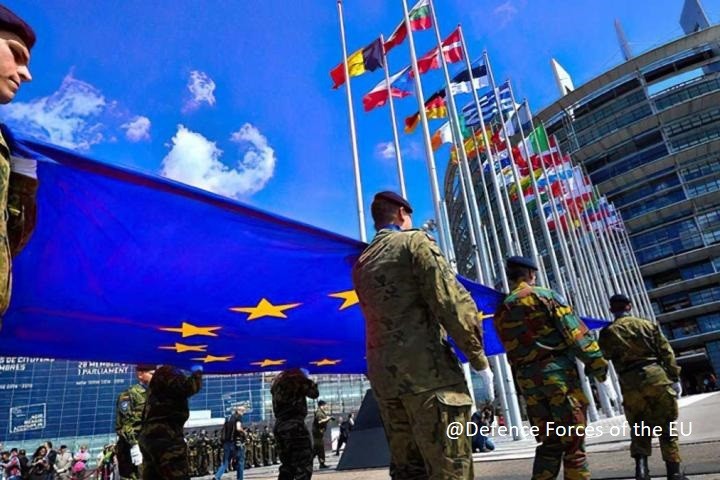From cooperation to coordination of future joint acquisitions of the EU: is it viable?

Throughout 2022, we have seen how the Member States, promoted by the Commission and the Council of the European Union, have advanced significantly on the path of cooperation in the development of military capabilities. In the wake of the Ukraine conflict, the heads of state and government met in Versailles, France in March 2022 to address three key dimensions:
-
strengthening our defense capabilities;
-
reducing our energy dependency; and
-
developing a more solid economic base.
Regarding the reinforcement of the defense capabilities of the European Union, the European Commission was invited to carry out an analysis on the investment deficits in defense matters and the way forward, in coordination with the European Defense Agency (EDA). Said analysis, called “Defense Investment Gaps Analysis and Way Forward (DIGA)” was presented in May 2022 and includes recommendations to strengthen the European defense industrial and technological base.
The report identifies gaps in three key areas:
In relation to defense spending, the document states that even though the Member States have announced increases in their defense budgets close to an additional 200,000 million euros in the coming years, without a coordinated approach the increase in spending is the risk of leading to further fragmentation and undoing the progress made so far. While these increases are essential, they come after years of major cuts and severe underinvestment. From 1999 to 2021, combined EU defense spending increased by 20%, compared to 66% for the U.S., 292% for Russia and 592% for China.
In relation to the industrial base, the report indicates that, despite the general competitiveness of the sector, demand is fragmented. Therefore, the industry continues to be structured along national borders, with the exception of the aeronautics and missiles sectors. Alongside this, there are dependencies for key defense equipment for which the European defense industrial and technological base does not offer its own solutions.
Lastly, regarding military capabilities, three urgent priorities are identified: replenishing arsenals, replacing systems inherited from the Soviet era, and strengthening air and missile defense systems. Beyond these urgent capacity gaps, it is proposed to work on a series of strategic capacities in the medium and long term in terms of air, land, maritime, space and cyber defense.
As a result of this report, a working group was created, made up of the EDA, the Commission, and the General Staff of the European Union called the Defense Joint Procurement Task Force (DJPTF). Its mission is to support joint procurement and replenish stock shortages generated by the support provided to Ukraine. The work carried out within this Task Force will be implemented thanks to the EDIRPA (European Defense Industry Reinforcement through common Procurement Act) "Instrument.” This tool has been initially endowed with 500 million euros and is designed to favor joint acquisition in the very short term and with an urgent nature, with which it is intended to restore stocks and availability prior to the conflict in addition to favoring future assistance to Ukraine.
The regulation, which is expected to be approved in June of 2023, will be implemented through a work program for the planned two-year duration. It will have a structure similar to that already known for the EDFs, although the consortia will be composed of countries, not companies.
EDIRPA will pave the way towards an EU framework for joint defense procurement. To this end, between 2022 and 2023 the Commission will establish the conditions of the European Defense Investment Program (EDIP), through which Member States jointly acquire defense capabilities in collaboration, being able to provide associated financing from the EU in projects that are considered of great interest.
In addition to the tools and instruments mentioned to encourage cooperation, the Commission proposes in its report to have more ambitious coordination in previous phases, to avoid having twenty-seven uncoordinated national approaches, thus allowing for joint prioritization. To this end, it proposes what it calls "joint strategic programming and acquisition of the EU in defense matters" in which the Member States, the EDA and the European Commission itself participate. The Commission even proposes that whoever carries out this function, act in the future as a central purchasing body for the joint acquisition of the EU and even providing support in the acquisition to the Member States in their joint acquisitions, including in the management of the last stages of the projects financed by the European Defense Fund (EDF).
In March we saw news from the EDA about the joint acquisition of 155mm ammunition by 18 nations to support Ukraine. In the first week of May, the European Commission presented a new plan to boost arms manufacturing across the EU, called ASAP, which has been endowed with an additional €500 million from the EDF and EDIRPA.
Beyond proposing joint acquisition and providing support to boost European industry... Is joint programming and prioritization possible? It is one thing to support coordination, but participating in something as personal as nationally prioritizing needs seems like a difficult step forward for nations to take.
The appearance of the European Commission in these matters entails, on the one hand, future possibilities for the European defense industry as a whole, and, on the other, becomes a challenge if the future of military needs and industrial bases of the Member States are not understood individually.
GMV has a clear international vocation, as demonstrated by being awarded in 22 EDF consortia, which makes us the first European MIDCAP in terms of participation in European initiatives. For this reason, we are sure that our capabilities will be up to the demands of the European Industry in the defense sector.
Author: Begoña Rojo Carralero